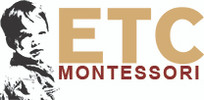Product Overview
- Designed with our easy cut system - 5 cuts or less. Requires only 3 cuts.
- Printed on premium thick card stock. May be used unlaminated or laminated
Classified nomenclature for the External Characteristics of Cnidarians. Used in the study of zoology in the elementary. This set focuses on just the Cnidarians.
Includes:
- 1 Wall Chart
- Control picture and label
- Control definition and label
- Matching picture with label, and
- Matching definition with blanks and label
Since the control charts and control cards are included, we do not include a booklet.
Equipping 6- to 9-year-olds with accurate cnidarian nomenclature does much more than teach “big words”—it shapes habits of precise observation, systems thinking, and ecological empathy.
1. Builds a Precise Scientific Vocabulary
-
Root-based terms that travel – Words such as nematocyst (“thread-capsule”), mesoglea (“middle jelly”), medusa, and polyp introduce Greek and Latin building blocks that recur in later biology and even medicine.
-
Literacy crossover – Parsing cnidocyte (NIGH-doh-site) demystifies silent letters and reinforces decoding strategies.
2. Sharpens Observation and Classification Skills
-
Form→function reasoning – Labeling the radial body plan, the single gastrovascular opening, and the transition from sessile polyp to swimming medusa invites students to ask why each form exists and how it works.
-
Criteria-based sorting – Distinguishing cnidarians from look-alike ctenophores or annelids rehearses the scientist’s discipline of grouping by internal structure, not surface resemblance.
3. Grounds Abstract Ideas in Concrete Experience
Montessori practice thrives on hands-on encounters: preserved coral skeletons, a classroom hydra culture, or transparent jellyfish models. Three-part cards labeled “tentacle,” “mouth/anus,” and “mesoglea” give children tangible anchors for otherwise abstract anatomy.
4. Fosters Systems Thinking and Ecology
-
Symbiosis & cycles – Knowing that reef-building corals house zooxanthellae prompts discussion of photosynthesis, carbon sinks, and why coral bleaching matters.
-
Food-web literacy – When an anemone becomes more than “ocean flower” and is recognized as a cnidarian predator, students can trace energy flow from plankton to sea turtles.
5. Cultivates Respectful Stewardship
Specific names breed specific care. A child who can say “This is a sea anemone polyp with delicate nematocysts” is less likely to prod it and more likely to advocate for reef protection.
6. Integrates Seamlessly Across the Curriculum
| Curriculum Area | Practical Tie-In |
|---|---|
| Language | Sentence analysis using mesoglea, root study of nema + cyst. |
| Mathematics | Graphing polyp growth, measuring medusa bell diameters, calculating radial symmetry angles. |
| Cultural Studies | Exploring coral in Polynesian navigation or jellyfish in Japanese cuisine. |
| Art | Radial-symmetry mandalas inspired by jellyfish; watercolor wash illustrating mesoglea transparency. |
| Practical Life | Maintaining a mini-reef tank; testing salinity and pH to keep polyps healthy. |
RESOURCES
Look at our Science Flow Chart for Upper Elementary and that for Lower Elementary to see how this work fits in with the traditional Montessori curriculum.
STANDARDS
View the Standards met through this material
SUGGESTED CONTAINERS
These suggested containers are based on a rotational model
1 Clear Snap Envelopes - Small







